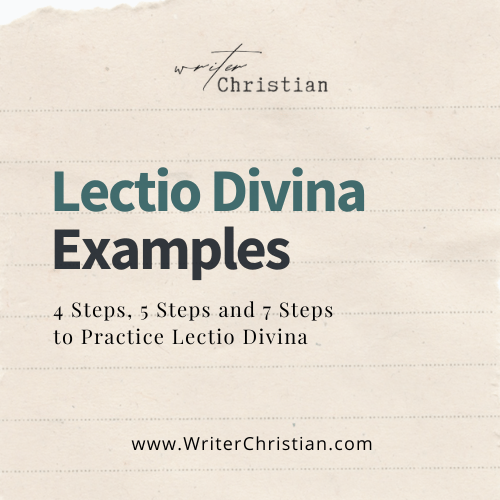If you’re looking to deepen your relationship with God, there are few practices more rewarding than Lectio Divina. This ancient practice of prayer and meditation on scripture has been used to help Christians connect with God and gain a deeper understanding of faith. However, it can be challenging to know where to begin or how to get the most out of your practice. That’s where guided Lectio Divina comes in.
Although I grew up in a Christian household, it wasn’t until my mid-30s that I was introduced to Lectio Divina. I still remember the first time I experienced a guided session, led by my mentor. With my eyes closed, I listened to the passage being read aloud and followed along as the leader directed the group’s attention to specific words and phrases. The experience of truly listening to God in this way was completely new and transformative for me.
In this blog post, we’ll explore the benefits of using guided Lectio Divina, and how it can help you connect with God.

What is Guided Lectio Divina?
Guided Lectio Divina is a form of contemplative prayer in which a trained leader guides a group of individuals through the process of reading, meditation, prayer, and contemplation of a specific passage from the Bible. This practice can be helpful for those who are new to Lectio Divina or those who struggle with staying focused during individual practice.
The process of guided Lectio Divina typically involves four components:
- Reading: The leader of the session selects a passage from the Bible and reads it slowly and intentionally, allowing participants to listen and absorb the words.
- Meditation: After the passage is read, participants are invited to reflect on a particular word, phrase, or idea that stood out to them during the reading. This step involves quiet contemplation and inward reflection.
- Prayer: Participants then turn their reflections into prayer, speaking to God about what they have learned or what they need help with.
- Contemplation: The final stage of guided Lectio Divina involves simply sitting in silence and allowing God to speak to the individual. This step involves no words or thoughts and is often considered the most powerful part of the process.
Guided Lectio Divina vs Individual Practice
Guided Lectio Divina differs from individual practice in that it provides a structured and supportive environment for participants. The leader guides the session, sets the pace, and keeps everyone on track, making it easier for individuals to stay focused and engaged throughout the entire process.
Guided Lectio Divina Resources
There are many resources available for those interested in guided Lectio Divina, including books, apps, and online courses. Some popular options include “Sacred Reading: The Ancient Art of Lectio Divina” by Michael Casey, “Pray as You Go” app, and “Lectio Divina Online” course offered by the Benedictine Monks of Saint John’s Abbey. These resources can be particularly helpful for those who are new to the practice and seeking guidance and support as they begin their journey with Lectio Divina.
Benefits of Guided Lectio Divina
Guided Lectio Divina can help deepen one’s spiritual practice and connection with God. It involves a structured process of reading, meditation, prayer, and contemplation, led by a guide or teacher. Here are some of the benefits of using guided Lectio Divina in one’s spiritual practice:
- Increased focus and intentionality: Guided Lectio Divina helps to focus the mind and quiet the distractions of the outside world. By following the guide’s instructions, one can stay present in the moment and fully engage with the text.
- Deeper understanding of the Bible and spiritual texts: Through guided Lectio Divina, one can gain a deeper understanding of the Bible and other spiritual texts. The guide will often provide context, history, and insight that can help to illuminate the text and its meaning.
- Enhanced prayer life and connection with God: Guided Lectio Divina can help to deepen one’s prayer life and strengthen their connection with God. By focusing on the text and listening for God’s voice, one can open themselves up to new revelations and insights.
- Increased self-awareness and personal growth: As one engages in guided Lectio Divina, they may become more aware of their own thoughts, feelings, and reactions. This increased self-awareness can lead to personal growth and transformation.
- Increased creativity and inspiration for writing and journaling: Guided Lectio Divina can also help to spark creativity and inspiration for writing and journaling. By engaging with the text in a deeper way, one may discover new insights and ideas that they can explore further in their writing.

How to Incorporate Guided Lectio Divina into Your Spiritual Practice
Here are some practical tips and strategies for incorporating guided Lectio Divina into your spiritual practice:
- Find a quiet and comfortable space to practice: It’s important to create a space that is free from distractions and interruptions, so that you can fully focus on the practice of guided Lectio Divina. This could be a room in your home, a quiet park or nature spot, or a quiet corner of your church.
- Select the right resource for your needs: There are many different resources available for guided Lectio Divina, including books, apps, and online courses. It’s important to select a resource that resonates with your spiritual beliefs and practices, and that offers guidance and support as you explore this practice.
- Set aside regular time for practice: Just like any other spiritual practice, guided Lectio Divina requires regular commitment and discipline. Set aside a specific time each day or week to practice, and stick to that schedule as much as possible. This will help you build a habit and make the practice a regular part of your spiritual routine.
- Combine guided Lectio Divina with journaling or writing: Many people find that combining guided Lectio Divina with journaling or writing can help them deepen their spiritual practice and gain greater insights from their readings. After completing a session of guided Lectio Divina, take some time to reflect on what you’ve learned and record your thoughts and feelings in a journal or notebook.
Additional Resources for Guided Lectio Divina
Here are some additional resources for readers who want to learn more about guided Lectio Divina:
Books:
- “Sacred Reading: The Ancient Art of Lectio Divina” by Michael Casey
- “Lectio Divina Bible Study: The Sacramental Word” by Stephen J. Binz
- “Praying Scripture for a Change: An Introduction to Lectio Divina” by Tim Gray
Apps:
- Lectio365
- Hallow
- Pray As You Go
Online Courses:
- Lectio Divina Workshop by Contemplative Outreach
- Lectio Divina 101 by Abbey of the Arts
- Lectio Divina Immersion Course by The Practice


